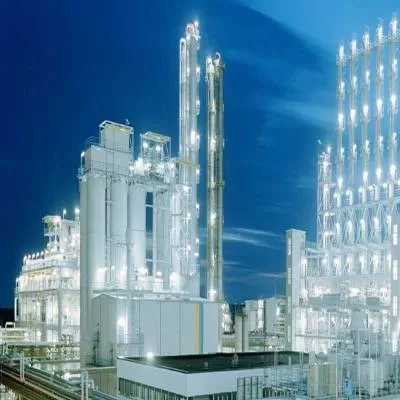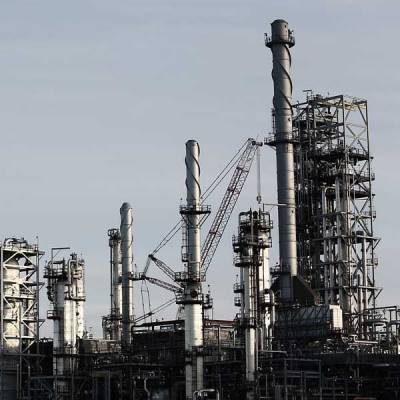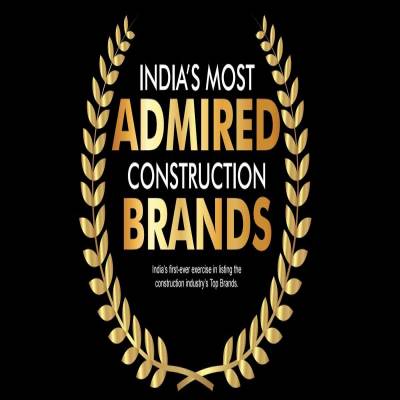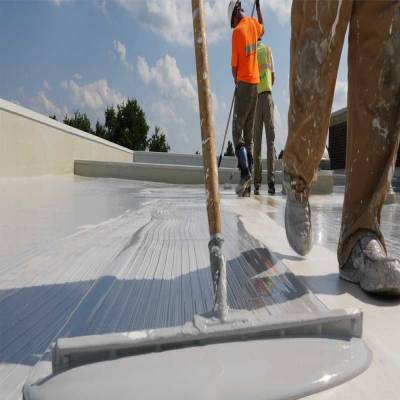- Home
- Real Estate
- Construction Drivers

Construction Drivers
Current estimates from FICCI (in association with Tata Strategic Management Group) peg the construction chemical industry as being worth Rs 3,500 crore, and expect it to grow to Rs 7,000 crore by 2019. Close to 300 companies operate in this segment, according to FICCI.
¨We expect the industry to grow at 19 per cent CAGR through to 2019, a major hike over the 12 per cent growth rate in recent years,¨ says Samir Surlaker, President, Construction Chemicals Manufacturing Association (CCMA), and Managing Director, MC-Bauchemie (India) Pvt Ltd.
Market drivers
Ready-mix concrete and precast concrete are gaining traction for all types of construction, and are driving the use of construction chemicals to the extent of the scale of the project and the specifications laid down, says Nilotpol Kar, Director, Construction Chemicals, BASF South Asia.
Also, awareness of construction chemicals is growing, so the market holds significant promise.
¨I see huge potential, especially in the admixtures segment, given that in 2014-15, some 530 million cu m of concrete was produced in India and concrete admixtures play a huge role in the economy and performance of concrete,¨ says Giles Everitt, Managing Director, Chryso India. ¨We have held road shows across the country to spread awareness of our innovations for placing and pumping concrete. Support from the CCMA to educate concrete users will help accelerate the penetration of admixtures in concrete and tap into the huge potential.¨
At present, CCMA has about 50 member companies representing roughly 80 per cent of the total business. It is represented on various BIS committees and has also been invited on committees for the Indian Concrete Institute where it is developing documentation and standards, which Surlaker expects will make a difference after they are rolled out shortly.
¨We have also promoted the correct usage of chemicals among end users, applicators, specifiers and building owners at interactive national regional seminars (C3 Regional) and international seminars (C3),¨ he shares.
Made in India, for India
Construction chemicals of international standards have been manufactured in India out of locally available raw materials for over 25 years now. Some components of the products made are imported, but production largely is in India and on the rise. While domestic manufacturing is good for the economy, having construction chemicals designed for Indian conditions makes a huge difference to construction outcomes. In that, MC-Bauchemie Germany takes product development for India to a new level. Surlaker explains how: ¨Our collaborators develop and test products for long-term storage, suitability of application and performance in an ´Indian Room´ with simulated Indian weather conditions. Thereafter, the products are put through two years of limited applications with long-standing clients. Products are then introduced in the Indian market after satisfactory trials.¨
MC-Bauchemie chemicals, designed for use in Indian conditions, include Zentrament and Muraplast lines of admixtures, Dichtament and Zentrifix lines of waterproofing and repair products, Zentrival line of tile adhesives and Dreitop line of flooring. These admixtures are designed to perform at higher temperatures found in India and are robust for a variety of cements, sands and aggregates, as is commonly found in the country. MC-Bauchemie tile adhesives meet European standards but have a working time designed for higher temperatures experienced in India.
Beyond country condition-specific products, some suppliers are also taking up site-specific manufacturing to ensure compatibility with site conditions, workability and strength requirements and raw materials. ¨Admixtures are probably the best example where it is common to make solutions tailor- made for site-specific usage,¨ says Surlaker.
High-demand segment: Admixtures Admixtures enjoy almost 40 per cent of the Indian construction chemicals market.
¨Greater product awareness and product diversity have helped admixtures grow to such a prominent position,¨ notes Kar.
Here are just some uses of admixtures: Accelerate the mixing of concrete ingredients; achieve high fluidity and low viscosity to enable long-distance pumping; retain workability in transit; reduce the ´stickiness´ of concrete to ease placing; provide high early and late strengths faster as in precast applications; provide normal setting at low temperatures in colder climates; provide crack and shrinkage resistance in concrete; etc.
Given the huge scope of admixtures, companies are introducing many product innovations.
BASF has introduced Smart Dynamic Concrete, a proprietary admixture enabling new-generation fluid self-consolidating concrete. ¨It needs no vibration, thus increasing site safety,¨ says Kar. ¨It helps improve productivity and ushers in economy by cutting manpower needs.¨
¨Chryso has come out with an innovative surface retarder that does away with the need for high-pressure water systems to expose the concrete aggregate on the surface, thus saving on water as well as a power washer or electricity,¨ shares Everitt. ¨Instead, it enables the retarded surface to be swept away with a brush. It opens up a huge opportunity for horizontal and vertical concrete applications to be more aesthetically pleasing and anti-slip.¨
Chryso also offers the Delta range of superplasticisers and new-generation plasticisers to produce concrete with low permeability that prevents the ingress of water into the structure. ¨Our Delta range delivers the best outcomes in conjunction with good mix design practice,¨ adds Everitt.
Hot-selling waterproofing
Waterproofing systems have grown in diversity. Today, rigid, semi-flexible and flexible membranes based on various chemistries, polyurethane, bituminous, polymers, etc, are available for different kinds of applications.
Preventive waterproofing materials include integral waterproofing admixtures, polymer additives, slurry-applied polymer modified coatings, crystalline coatings or resin-based membrane forming bonded systems. Remedial waterproofing systems mostly involve resin-based (epoxy, PU or acrylic resin) injection systems followed by surface-applied treatment.
Which of these is most popular?
¨At the moment, our integral waterproofing admixtures as well as polymer-modified mineral coatings are most popular for the long life they provide in the harshest conditions and deep basements,¨ says Surlaker.
¨Demand is highest for fully bonded membranes for waterproofing,¨ says Nagaraj. Trends in waterproofing Construction trends majorly influence demand for waterproofing chemicals. As an example, the inclusion of podiums as a feature of high-rise mass housing has necessitated deeper basements and, in turn, the combination of a few waterproofing systems, observes Kar. Such composite systems are best designed based on local conditions, on whether the substrate is dry, damp or submerged.
¨Demand for composite systems includes demand for systems that can blend with other construction elements,¨ adds Kar.
For instance, BASF MasterSeal Roof, a spray-applied polyurethane waterproofing system, has optimised properties in terms of modulus of elasticity with reference to the concrete substrate and is used excellently in combination with insulation systems. Greater attention is being paid to the performance of waterproofing technologies, in terms of water-tightness.
¨We are seeing more joint detailing of specifications by consultants and architects and manufacturers and, thereafter, joint execution by the manufacturer, contractor and applicator,¨ says Kar. ¨Waterproofing is more likely to be a success when the various stakeholders work together.¨
Quick Bytes
- Current construction chemical industry worth `3,500 crore, and expected to grow to Rs.7,000 crore by 2019.
- Ready-mix and precast concrete are driving the use of construction chemicals.
- Admixtures consist 40 per cent of the market.
- Demand is highest for fully bonded membranes for waterproofing.
Case Study: Mall Basement Waterproofing
Fosroc offers Proofex Engage for basement waterproofing. Proofex Engage is a waterproof membrane system incorporating a cell mesh, which mechanically bonds to freshly poured concrete.
Proofex Engage differs from conventional basement waterproofing systems that are loosely laid. Such systems offer no seal between the waterproofing and the structural concrete, which could lead to water leakages. ¨Ideally, the waterproofing membrane should bond with the structural concrete,¨ says BS Nagaraj, Product Segment Manager, Fosroc.
Fully bonded pre-applied waterproofing systems are ideal for below-ground structures where the exterior face of the structural concrete is inaccessible. Also, Proofex Engage conforms to the recommendations of BS8102:2009, notes Nagaraj.
Proofex Engage was the waterproofing system of choice for PVP Square Mall, Vijayawada, ¨because of the high water table and sandy soil¨, says Dileep Badey, Manager-Mall Operations, PVP Square, and project manager for the mall project.¨PVP Square Mall is located barely 500 m away from the Krishna river bank where the water table is very high. It boasts of three levels of basement car parking, sufficient for 350 vehicles, the only structure in coastal Andhra Pradesh to have so much underground parking. We chose Fosroc´s Proofex Engage because it perfectly fitted the situation and is easy to apply and monitor - you just clean the surface and spread the mats û whereas pressure or foam-based waterproofing compounds need trained applicators and trained supervisors. When we studied the market, Proofex Engage was the only waterproofing option of its kind, albeit it was much higher than the cost of other options. We could not take chances for our prestigious project.¨
What can you do to prevent corrosion?
The choice of chemical for corrosion protection depends on the potential of corrosion attack and the duration the concrete structure is expected to perform. Nilotpol Kar, Director, Construction Chemicals, BASF South Asia, lists a few options:
- Steel: Steel is most commonly treated with fusion-bonded epoxy to prevent corrosion.
- Fresh concrete: Adding pozzolans or mineral admixtures (like silica fume) to fresh concrete to make it absolutely dense prevents corrosion. Achieving low water-cementitious ratios by the use of a mid to high-range water reducer (superplasticiser) also helps achieve corrosion resistance, provided the concrete is accurately placed, compacted and cured.
- Chloride-induced or sulphate-induced corrosion can also be protected against by adding a nitrite-based corrosion inhibitor to fresh concrete or even the latest versions of bipolar corrosion inhibitors.
- Existing concrete: Anti-corrosive coatings offer protection against chloride attack (salt spray resistant) on exteriors. Anti-carbonation coatings could be based on acrylics, epoxies or modifications of other organic systems.
Chemicals usage best practice for concrete equipment optimisation
Capacite Infraprojects is currently operating six batching plants for six project sites and buys ready-mix concrete for over 16 other project sites. At the time of starting a project, the company's quality teams and the ready-mix concrete supplier jointly finalise the admixtures to be used. Then it ensures the same chemicals are available at site. Mahesh Gawade, General Manager and HOD (P&M), Capacite Infraprojects Ltd, explains why: ¨Having the same chemicals readily available ensures we can manage the concrete pumping equipment, pump, placer boom, etc, in the eventuality of equipment outages like the concrete pump getting choked, line burst, etc, and ensures better outcomes because no two chemicals, even of same type, from different suppliers are the same. We opt for chemicals from companies like Sika, Fosroc, etc.¨
- Construction Chemical
- FICCI
- Tata Strategic Management Group
- Samir Surlaker
- Construction Chemicals Manufacturing Association
- CCMA
- MC-Bauchemie (India) Pvt Ltd
- Nilotpol Kar
- BASF
- Giles Everitt
- Chryso India
- Zentrament
- Muraplast
- Dichtament
- Zentrifix
- Dreitop
- Smart Dynamic Concrete
- MasterSeal Roof
- Fosroc
- Proofex Engage
- BS Nagaraj
- Dileep Badey
- PVP Square
- Nilotpol Kar
- Capacite Infra
Construction chemicals are posting strong growth, encouraging product and application innovations.' Current estimates from FICCI (in association with Tata Strategic Management Group) peg the construction chemical industry as being worth Rs 3,500 crore, and expect it to grow to Rs 7,000 crore by 2019. Close to 300 companies operate in this segment, according to FICCI. ¨We expect the industry to grow at 19 per cent CAGR through to 2019, a major hike over the 12 per cent growth rate in recent years,¨ says Samir Surlaker, President, Construction Chemicals Manufacturing Association (CCMA), and Managing Director, MC-Bauchemie (India) Pvt Ltd. Market drivers Ready-mix concrete and precast concrete are gaining traction for all types of construction, and are driving the use of construction chemicals to the extent of the scale of the project and the specifications laid down, says Nilotpol Kar, Director, Construction Chemicals, BASF South Asia. Also, awareness of construction chemicals is growing, so the market holds significant promise. ¨I see huge potential, especially in the admixtures segment, given that in 2014-15, some 530 million cu m of concrete was produced in India and concrete admixtures play a huge role in the economy and performance of concrete,¨ says Giles Everitt, Managing Director, Chryso India. ¨We have held road shows across the country to spread awareness of our innovations for placing and pumping concrete. Support from the CCMA to educate concrete users will help accelerate the penetration of admixtures in concrete and tap into the huge potential.¨ At present, CCMA has about 50 member companies representing roughly 80 per cent of the total business. It is represented on various BIS committees and has also been invited on committees for the Indian Concrete Institute where it is developing documentation and standards, which Surlaker expects will make a difference after they are rolled out shortly. ¨We have also promoted the correct usage of chemicals among end users, applicators, specifiers and building owners at interactive national regional seminars (C3 Regional) and international seminars (C3),¨ he shares. Made in India, for India Construction chemicals of international standards have been manufactured in India out of locally available raw materials for over 25 years now. Some components of the products made are imported, but production largely is in India and on the rise. While domestic manufacturing is good for the economy, having construction chemicals designed for Indian conditions makes a huge difference to construction outcomes. In that, MC-Bauchemie Germany takes product development for India to a new level. Surlaker explains how: ¨Our collaborators develop and test products for long-term storage, suitability of application and performance in an ´Indian Room´ with simulated Indian weather conditions. Thereafter, the products are put through two years of limited applications with long-standing clients. Products are then introduced in the Indian market after satisfactory trials.¨ MC-Bauchemie chemicals, designed for use in Indian conditions, include Zentrament and Muraplast lines of admixtures, Dichtament and Zentrifix lines of waterproofing and repair products, Zentrival line of tile adhesives and Dreitop line of flooring. These admixtures are designed to perform at higher temperatures found in India and are robust for a variety of cements, sands and aggregates, as is commonly found in the country. MC-Bauchemie tile adhesives meet European standards but have a working time designed for higher temperatures experienced in India. Beyond country condition-specific products, some suppliers are also taking up site-specific manufacturing to ensure compatibility with site conditions, workability and strength requirements and raw materials. ¨Admixtures are probably the best example where it is common to make solutions tailor- made for site-specific usage,¨ says Surlaker. High-demand segment: Admixtures Admixtures enjoy almost 40 per cent of the Indian construction chemicals market. ¨Greater product awareness and product diversity have helped admixtures grow to such a prominent position,¨ notes Kar. Here are just some uses of admixtures: Accelerate the mixing of concrete ingredients; achieve high fluidity and low viscosity to enable long-distance pumping; retain workability in transit; reduce the ´stickiness´ of concrete to ease placing; provide high early and late strengths faster as in precast applications; provide normal setting at low temperatures in colder climates; provide crack and shrinkage resistance in concrete; etc. Given the huge scope of admixtures, companies are introducing many product innovations. BASF has introduced Smart Dynamic Concrete, a proprietary admixture enabling new-generation fluid self-consolidating concrete. ¨It needs no vibration, thus increasing site safety,¨ says Kar. ¨It helps improve productivity and ushers in economy by cutting manpower needs.¨ ¨Chryso has come out with an innovative surface retarder that does away with the need for high-pressure water systems to expose the concrete aggregate on the surface, thus saving on water as well as a power washer or electricity,¨ shares Everitt. ¨Instead, it enables the retarded surface to be swept away with a brush. It opens up a huge opportunity for horizontal and vertical concrete applications to be more aesthetically pleasing and anti-slip.¨ Chryso also offers the Delta range of superplasticisers and new-generation plasticisers to produce concrete with low permeability that prevents the ingress of water into the structure. ¨Our Delta range delivers the best outcomes in conjunction with good mix design practice,¨ adds Everitt. Hot-selling waterproofing Waterproofing systems have grown in diversity. Today, rigid, semi-flexible and flexible membranes based on various chemistries, polyurethane, bituminous, polymers, etc, are available for different kinds of applications. Preventive waterproofing materials include integral waterproofing admixtures, polymer additives, slurry-applied polymer modified coatings, crystalline coatings or resin-based membrane forming bonded systems. Remedial waterproofing systems mostly involve resin-based (epoxy, PU or acrylic resin) injection systems followed by surface-applied treatment. Which of these is most popular? ¨At the moment, our integral waterproofing admixtures as well as polymer-modified mineral coatings are most popular for the long life they provide in the harshest conditions and deep basements,¨ says Surlaker. ¨Demand is highest for fully bonded membranes for waterproofing,¨ says Nagaraj. Trends in waterproofing Construction trends majorly influence demand for waterproofing chemicals. As an example, the inclusion of podiums as a feature of high-rise mass housing has necessitated deeper basements and, in turn, the combination of a few waterproofing systems, observes Kar. Such composite systems are best designed based on local conditions, on whether the substrate is dry, damp or submerged. ¨Demand for composite systems includes demand for systems that can blend with other construction elements,¨ adds Kar. For instance, BASF MasterSeal Roof, a spray-applied polyurethane waterproofing system, has optimised properties in terms of modulus of elasticity with reference to the concrete substrate and is used excellently in combination with insulation systems. Greater attention is being paid to the performance of waterproofing technologies, in terms of water-tightness. ¨We are seeing more joint detailing of specifications by consultants and architects and manufacturers and, thereafter, joint execution by the manufacturer, contractor and applicator,¨ says Kar. ¨Waterproofing is more likely to be a success when the various stakeholders work together.¨ Quick Bytes Current construction chemical industry worth `3,500 crore, and expected to grow to Rs.7,000 crore by 2019. Ready-mix and precast concrete are driving the use of construction chemicals. Admixtures consist 40 per cent of the market. Demand is highest for fully bonded membranes for waterproofing. Case Study: Mall Basement Waterproofing Fosroc offers Proofex Engage for basement waterproofing. Proofex Engage is a waterproof membrane system incorporating a cell mesh, which mechanically bonds to freshly poured concrete. Proofex Engage differs from conventional basement waterproofing systems that are loosely laid. Such systems offer no seal between the waterproofing and the structural concrete, which could lead to water leakages. ¨Ideally, the waterproofing membrane should bond with the structural concrete,¨ says BS Nagaraj, Product Segment Manager, Fosroc. Fully bonded pre-applied waterproofing systems are ideal for below-ground structures where the exterior face of the structural concrete is inaccessible. Also, Proofex Engage conforms to the recommendations of BS8102:2009, notes Nagaraj. Proofex Engage was the waterproofing system of choice for PVP Square Mall, Vijayawada, ¨because of the high water table and sandy soil¨, says Dileep Badey, Manager-Mall Operations, PVP Square, and project manager for the mall project.¨PVP Square Mall is located barely 500 m away from the Krishna river bank where the water table is very high. It boasts of three levels of basement car parking, sufficient for 350 vehicles, the only structure in coastal Andhra Pradesh to have so much underground parking. We chose Fosroc´s Proofex Engage because it perfectly fitted the situation and is easy to apply and monitor - you just clean the surface and spread the mats û whereas pressure or foam-based waterproofing compounds need trained applicators and trained supervisors. When we studied the market, Proofex Engage was the only waterproofing option of its kind, albeit it was much higher than the cost of other options. We could not take chances for our prestigious project.¨ What can you do to prevent corrosion? The choice of chemical for corrosion protection depends on the potential of corrosion attack and the duration the concrete structure is expected to perform. Nilotpol Kar, Director, Construction Chemicals, BASF South Asia, lists a few options: Steel: Steel is most commonly treated with fusion-bonded epoxy to prevent corrosion. Fresh concrete: Adding pozzolans or mineral admixtures (like silica fume) to fresh concrete to make it absolutely dense prevents corrosion. Achieving low water-cementitious ratios by the use of a mid to high-range water reducer (superplasticiser) also helps achieve corrosion resistance, provided the concrete is accurately placed, compacted and cured. Chloride-induced or sulphate-induced corrosion can also be protected against by adding a nitrite-based corrosion inhibitor to fresh concrete or even the latest versions of bipolar corrosion inhibitors. Existing concrete: Anti-corrosive coatings offer protection against chloride attack (salt spray resistant) on exteriors. Anti-carbonation coatings could be based on acrylics, epoxies or modifications of other organic systems. Chemicals usage best practice for concrete equipment optimisation Capacite Infraprojects is currently operating six batching plants for six project sites and buys ready-mix concrete for over 16 other project sites. At the time of starting a project, the company's quality teams and the ready-mix concrete supplier jointly finalise the admixtures to be used. Then it ensures the same chemicals are available at site. Mahesh Gawade, General Manager and HOD (P&M), Capacite Infraprojects Ltd, explains why: ¨Having the same chemicals readily available ensures we can manage the concrete pumping equipment, pump, placer boom, etc, in the eventuality of equipment outages like the concrete pump getting choked, line burst, etc, and ensures better outcomes because no two chemicals, even of same type, from different suppliers are the same. We opt for chemicals from companies like Sika, Fosroc, etc.¨























